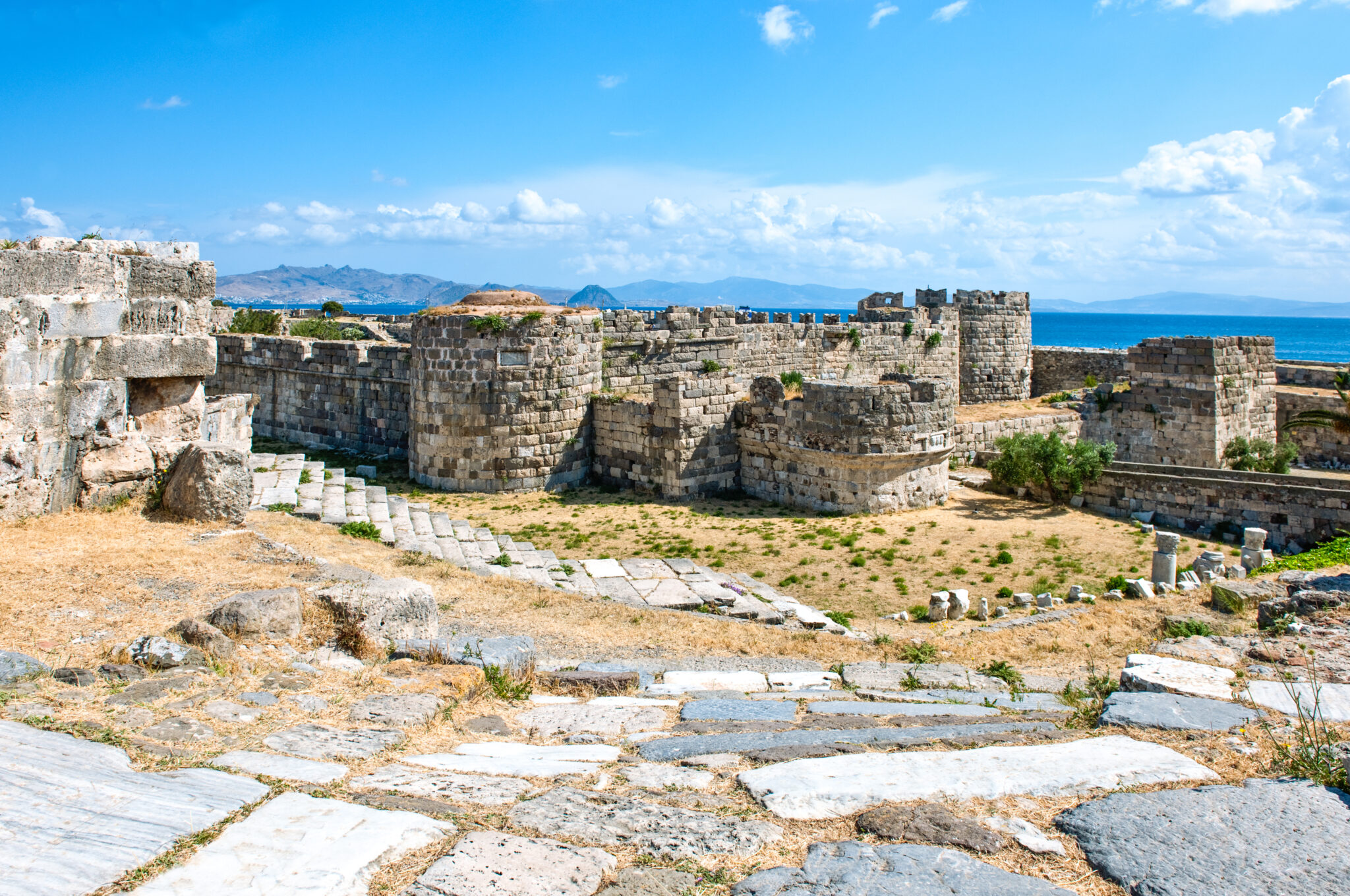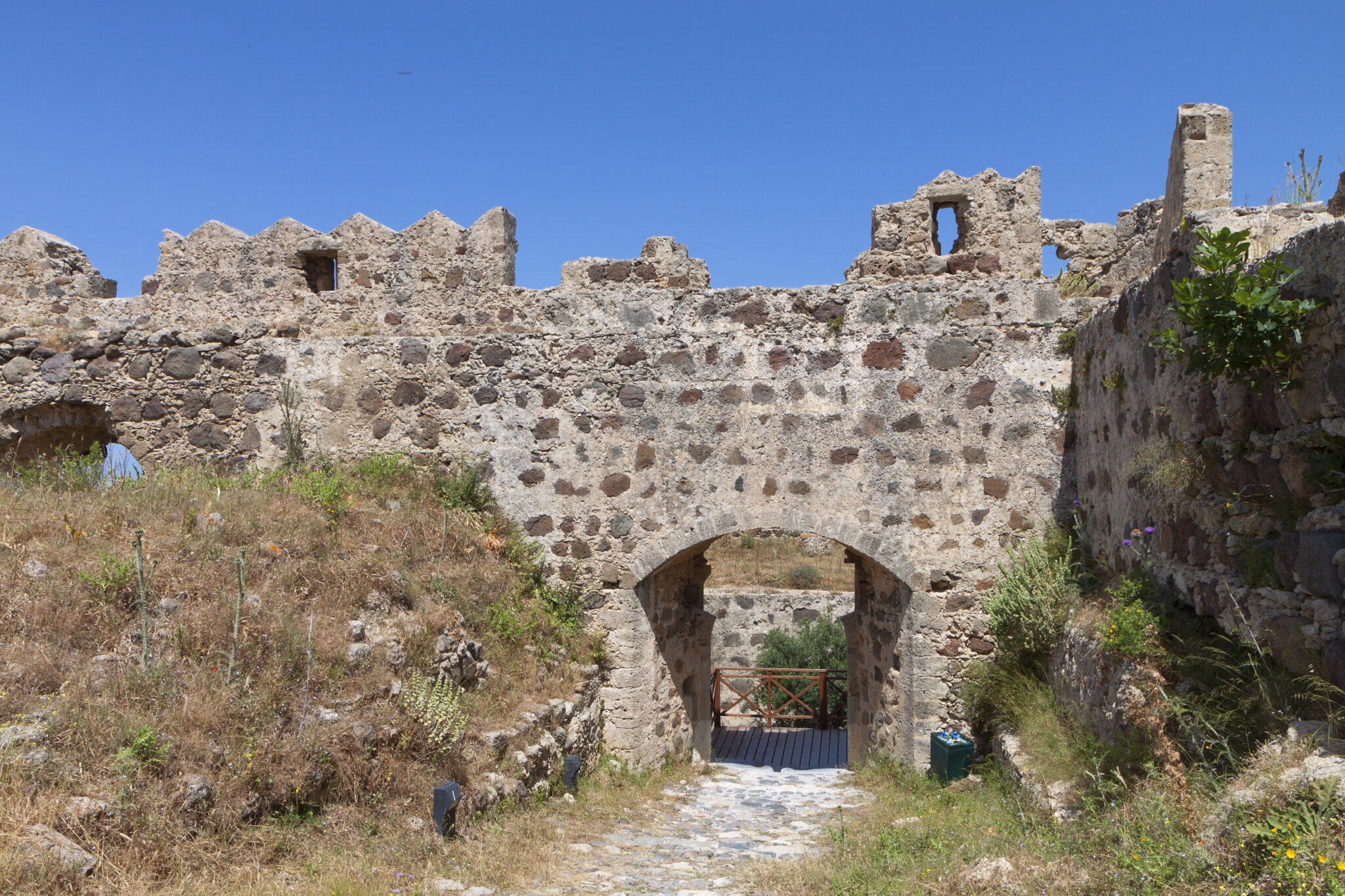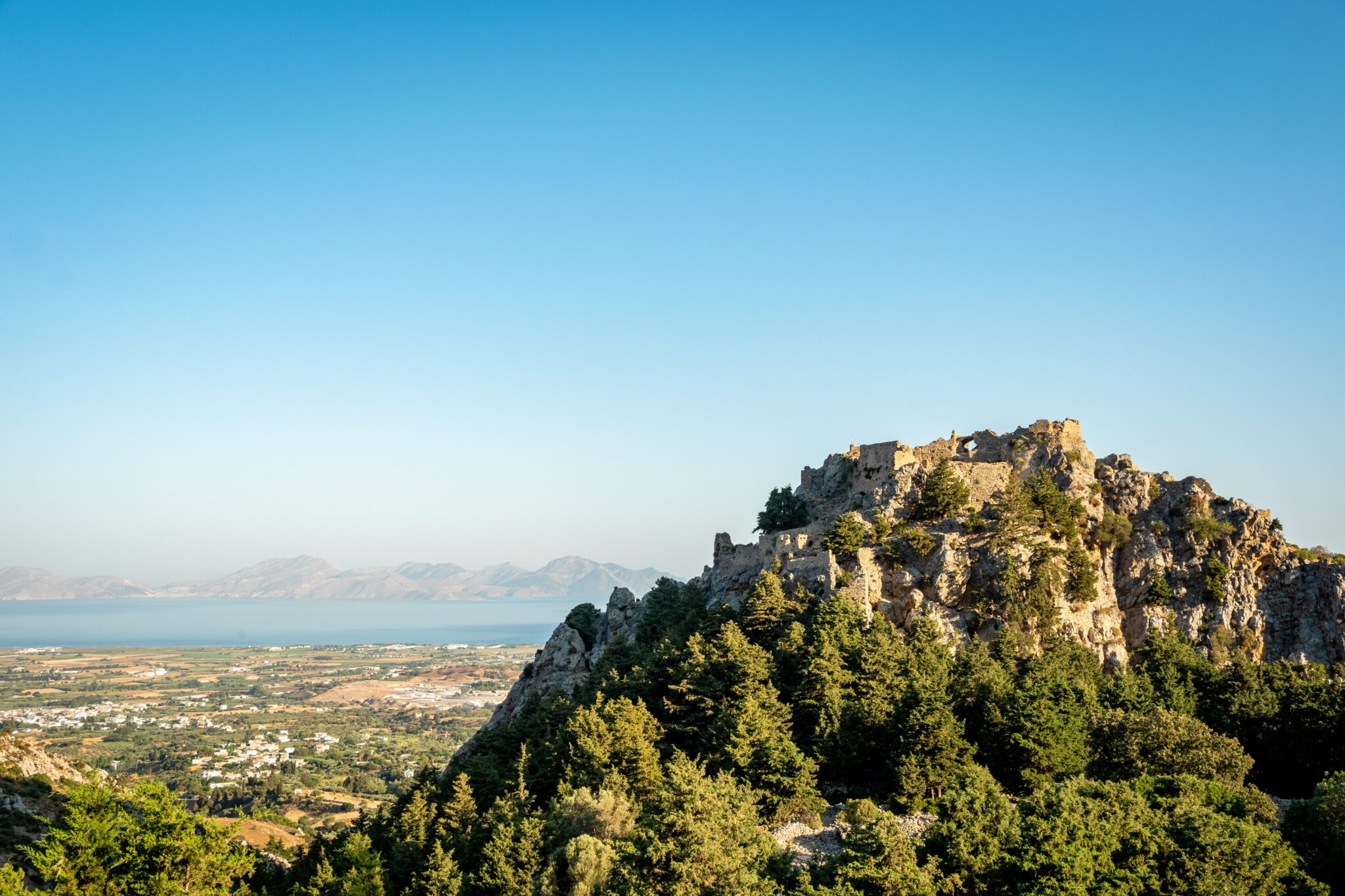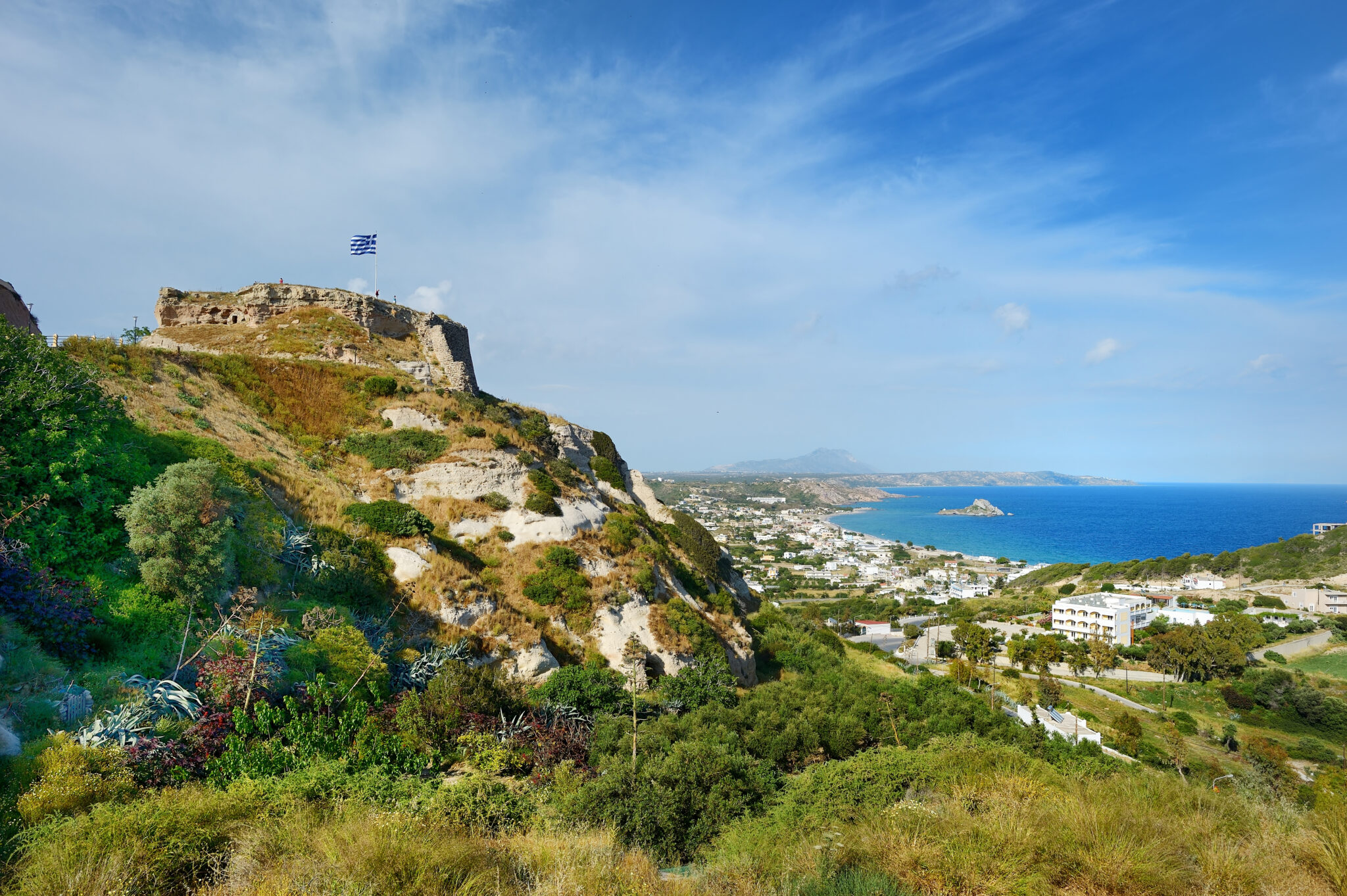Kos Island, the sun-drenched gem of the Dodecanese, may well invite you to kick back on its inviting beaches. But, should you manage to pry yourself from the allure of its cerulean waters, you will find a quartet of castles, each bearing tales of a time when knights and Ottomans danced a waltz of supremacy.
Castle of Nerantzia or the Castle of the Knights
Guarding the port of Kos, the Castle of Nerantzia or the Castle of the Knights is an imposing structure that paints an evocative picture of a time long past. Built in the 15th century by the industrious Knights of Rhodes, this fortress was constructed out of local stone and remnants of ancient buildings, a testament to the Knights’ creative resourcefulness. The castle’s history is a series of handovers of power. First, it was the Knights, then the Ottomans, and finally the Italians, each of whom left their unique imprint on the structure. Walking through its grand arches, you’ll notice the influences of different architectural styles, making it a living museum of sorts. From the blazons on the masonry to the oblique basalt columns at the Carmadino gate, the castle holds a fascinating blend of the past that intrigues every history buff.
Antimacheia Castle
Nestled inland, away from the sea, Antimacheia Castle is a fortress that dances to its own architectural rhythm. A peculiarity of this castle is its lack of towers, replaced instead with a grand round bastion that guards the gate. Constructed between 1322 and 1346, it stood as a beacon of strength during the Ottoman siege in 1457, successfully repelling an army of 16,000 with just 15 knights and 200 locals. Despite suffering extensive damage from an earthquake in 1493, it was rebuilt and continued to serve as a military base until the late 19th century. Now abandoned, the castle stands as a testament to the resilience and architectural prowess of an era long past.
Pyli Castle
Perched on a hill in the center of Kos Island, Pyli Castle offers a panoramic view of the surrounding landscape. The construction of this citadel is attributed to the monk Hosios Christodoulos in the 11th century. It holds a rich tapestry of history, its structures reflecting different epochs: the Hellenistic, Byzantine, and the era of the Knights of the Order of St John. Its notable features include a Byzantine gateway flanked by semi-circular arches and seven preserved towers. The castle was inhabited until the 19th century when it was abandoned due to a plague outbreak. Despite its desolation, it still exudes an air of regal charm, drawing history enthusiasts from around the globe.
Castle of Kefalos
The Castle of Kefalos, stationed on a hill on the southwestern side of Kos Island, is steeped in historical significance. It was constructed during the Byzantine period and later reinforced by the Knights of the Order of St John. This fortress has withstood the test of time and numerous Ottoman raids, standing strong as a refuge for locals. Despite its resilience, the castle was eventually abandoned in 1505 due to its perceived inadequacy in the face of an imminent Turkish raid. Its remnants, including a 20-meter long section of wall and an impressive water cistern, are all that remain of this once-thriving stronghold. Even in its derelict state, it serves as a poignant reminder of the island’s tumultuous past.
Thus, the four castles of Kos Island, each with its unique tale, serve as a reminder of the island’s storied past. As stone witnesses to history, they stand in contrast to the relaxed vibe of this Mediterranean haven. They are well worth a visit – a historical counterpoint to the beachside leisure that might otherwise consume your time on Kos. After all, it’s not every day that one can bask in the sun and then stroll through history.
Read also:
Culture on the Dodecanese Island of Kos










